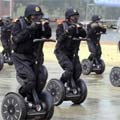Federal brass life with heavy loads
23 posts
• Page 1 of 1
Federal brass life with heavy loads
Just sharing a bit of info here.
A friend gave me these few, brass from 100x Federal factory rounds loaded with 150gr soft points.
Each reloaded 3 times with 180gr pills and 42.5gr of 2206H (max load according to ADI) and fired. 4 shots total, 3 with heavy loads and this is the result.
All fired in a Ruger Scout. FL sized after shots. Only 100 cases so not a massive test but 6% failure rate after 4 shots (was a 6th case given that's not in the photo with the same problem).
Bit of info on life expectancy I guess for any choosing brass.
A friend gave me these few, brass from 100x Federal factory rounds loaded with 150gr soft points.
Each reloaded 3 times with 180gr pills and 42.5gr of 2206H (max load according to ADI) and fired. 4 shots total, 3 with heavy loads and this is the result.
All fired in a Ruger Scout. FL sized after shots. Only 100 cases so not a massive test but 6% failure rate after 4 shots (was a 6th case given that's not in the photo with the same problem).
Bit of info on life expectancy I guess for any choosing brass.
-

Lorgar - Second Lieutenant

- Posts: 2156
- Victoria
Re: Federal brass life with heavy loads
As soon as I read the header I was going to write about the necks and then I opened it and wham there's your pic...
It was the same in my 7mm Rem Mag as I suspected when seating and neck sizing as they as hard as and in need of annealing.
It was the same in my 7mm Rem Mag as I suspected when seating and neck sizing as they as hard as and in need of annealing.
-

deye243 - Second Lieutenant

- Posts: 2243
- Victoria
Re: Federal brass life with heavy loads
I use federal brass for my 308 reloads. I'm using a relatively mild load of 42gr of 2206H behind a 168gr pill (I think ADI's max was 43.5).
I've had upwards of 6 loadings out of all my brass, some have got to 10 even and I'm yet to experience a failure. I've never annealed these cases and all were FLS for the first loading and then necksized for further loadings.
I always thought it was excellent brass and wondered why people at the range talked it down. If this is what other people are getting out of it, no wonder!
I've had upwards of 6 loadings out of all my brass, some have got to 10 even and I'm yet to experience a failure. I've never annealed these cases and all were FLS for the first loading and then necksized for further loadings.
I always thought it was excellent brass and wondered why people at the range talked it down. If this is what other people are getting out of it, no wonder!
.177, .22lr, .22-250R, 2x .308W, .30-30W, 7.62x54r, 8x56r, 9x19, .357 Mag, 12GA
-

Baldrick314 - Staff Sergeant

- Posts: 980
- New South Wales
Re: Federal brass life with heavy loads
Baldrick314 wrote:I always thought it was excellent brass and wondered why people at the range talked it down. If this is what other people are getting out of it, no wonder!
On those lighter loads hopefully you get much better life.
Replacing brass every 4-5 shots really add to your reloading costs
-

Wes - Corporal

- Posts: 364
- Victoria
Re: Federal brass life with heavy loads
Wouldn't be happy with that...
-

Bourt - Sergeant

- Posts: 559
- Queensland
Re: Federal brass life with heavy loads
Is it the same brass as their packet empty brass they sell for reloading?
They don't do cheaper brass for factory as it's arguably intended to only be fired once?
They don't do cheaper brass for factory as it's arguably intended to only be fired once?
-

sally-bee - Lance Corporal

- Posts: 127
- South Australia
Re: Federal brass life with heavy loads
I can't say for a fact but I'd be very surprised if they did two brass lines for that purpose.
I don't imagine it would make any sort of financial or practical sense to have to operate two separate production lines for brass.
Definitely makes no sense to purposely make an inferior line.
Reloading factor brass is hardly a rare practice, I'm sure they acknowledge the fact people will reload their factory ammo brass.
I don't imagine it would make any sort of financial or practical sense to have to operate two separate production lines for brass.
Definitely makes no sense to purposely make an inferior line.
Reloading factor brass is hardly a rare practice, I'm sure they acknowledge the fact people will reload their factory ammo brass.
-

Tiiger - Corporal

- Posts: 347
- Queensland
Re: Federal brass life with heavy loads
Maybe anneal them after the first firing?
Would be interesting to see if that changes thing significantly.
Would be interesting to see if that changes thing significantly.
-

Gwion - Colonel

- Posts: 3978
- -
Re: Federal brass life with heavy loads
Gwion wrote:Maybe anneal them after the first firing?
Would be interesting to see if that changes thing significantly.
You're probably right, I'm not in a position to test and share the result unfortunately.
The brass was gifted to me just as a point of interest for sharing. I'm using Winchester and Remington myself, not federal, and don't have an anneal in any case for a comparison.
Disappointing for the brand in any case as there are many people - as you'll know - getting 10,15 or many more shots from other brands of brass without annealing.
-

Lorgar - Second Lieutenant

- Posts: 2156
- Victoria
Re: Federal brass life with heavy loads
Dunno about you but I'd livid buying new brass for reloading and getting 4 shots out of it 
Remington 700 VTR in .308 WIn
Winchester Model 1873 in .44-40
Sako A7 in 243 Win
Winchester Model 1873 in .44-40
Sako A7 in 243 Win
-

Pom - Lance Corporal

- Posts: 122
- Queensland
Re: Federal brass life with heavy loads
That is the results of stress corrosion (age hardening). The brass hardens and shrinks hard around the bullet so when it fires the brass can't stretch much and splits.
The ammo could also have been exposed to ammonia from bore solvents which will speed up the process of hardening.
Also the brass could have been quite old and not ever annealed before it was loaded the first time.
Once stress corrosion sets in the brass is already fractured so even annealing might not save it from splitting, it might save some. Work hardening during reloading also adds to the problem.
The ammo could also have been exposed to ammonia from bore solvents which will speed up the process of hardening.
Also the brass could have been quite old and not ever annealed before it was loaded the first time.
Once stress corrosion sets in the brass is already fractured so even annealing might not save it from splitting, it might save some. Work hardening during reloading also adds to the problem.
- Jack V
- Sergeant

- Posts: 693
- New South Wales
Re: Federal brass life with heavy loads
Regarding possible causes in the reply above, I can add the following:
1) The ammo would not have been exposed to ammonia. I'm 99% sure he does not use an ammonia based cleaner and in any case I have reloaded with him and his setup and process is meticulous. There wouldn't have been any spill or transfer to the ammo.
2) The factory ammo the brass is from was bought new a maximum of 2 years ago, if not less than that. Plus however long it was on the shelf for.
3) The brass has not been annealed as part of the reloading.
1) The ammo would not have been exposed to ammonia. I'm 99% sure he does not use an ammonia based cleaner and in any case I have reloaded with him and his setup and process is meticulous. There wouldn't have been any spill or transfer to the ammo.
2) The factory ammo the brass is from was bought new a maximum of 2 years ago, if not less than that. Plus however long it was on the shelf for.
3) The brass has not been annealed as part of the reloading.
-

Lorgar - Second Lieutenant

- Posts: 2156
- Victoria
Re: Federal brass life with heavy loads
Jack V wrote:Also the brass could have been quite old and not ever annealed before it was loaded the first time.
How old does it have to be for hardening to start?
-

sneaker - Private

- Posts: 76
- New South Wales
Re: Federal brass life with heavy loads
Your ruger has the same chamber as my M77. I start with once-fired federal brass, federal primers, 150gr flat base and 46 grains of 2208. Some of my brass has been through probably five cycles and the only problem I see is elliptical primer pockets.
I think you may be running the crimp die too far down. It only needs to crimp the very edge of the neck. Also the best case length for your ruger 308 is 2.010 inches, not 2.015 as some of the literature suggests. Check and trim.
I think you may be running the crimp die too far down. It only needs to crimp the very edge of the neck. Also the best case length for your ruger 308 is 2.010 inches, not 2.015 as some of the literature suggests. Check and trim.
He that hath no sword; let him sell his garment and buy one.
- vonfram88
- Recruit

- Posts: 40
- Western Australia
Re: Federal brass life with heavy loads
sneaker wrote:How old does it have to be for hardening to start?
That is very hard to say . There are many factors . Purity of brass , annealed or not after manufacture , storage time and conditions , exposure to chemicals that speed up the process , number of times fired , how much work hardening has been done by reloading die system , cleanliness of stored fired brass.
New annealed quality brass un loaded will start to harden somewhat at about 7 years in good storage conditions . However as the case neck is not under stress it may not develop full stress corrosion .
If loaded the stress of the seated bullet will change things and it has been know to start in reloads at about 7 to 10 years . There have been cases of it happening much quicker under certain poor circumstances . It is interesting to note the Military try to fire off their small arms ammo at about 7 years or less.
In stored reloads it can happen quicker but the condition is variable . Some case necks will shown shrinkage below the bullet base indicating increased neck tension and others might not . Some may split on firing and some may not . Some thin brass can be work hardened so much by expander ball dies that the next time they fire the necks split but it may note be full on stress corrosion at that point if the were left loaded for a long time then it takes over and they could split without even being fired .
Once the neck starts to shrink and apply excessive neck tension a condition called neck weld can happen where the bullet starts to bond with the case neck . Again this is very variable but it can happen to a few in the batch and chamber pressure can rise quite high to move the bullet on that shot . In some extreme cases the neck can tear off the case and go up the bore with the bullet .
I can show photos of some of these conditions on 10 year old reloads that I did a storage trial on . Moly coating a bullet does help to decrease the problem of excessive neck tension due to age hardening and in my trial no moly coated bullet developed any kind of neck weld either in 10 years .
- Jack V
- Sergeant

- Posts: 693
- New South Wales
Re: Federal brass life with heavy loads
Lorgar wrote:Regarding possible causes in the reply above, I can add the following:
1) The ammo would not have been exposed to ammonia. I'm 99% sure he does not use an ammonia based cleaner and in any case I have reloaded with him and his setup and process is meticulous. There wouldn't have been any spill or transfer to the ammo.
2) The factory ammo the brass is from was bought new a maximum of 2 years ago, if not less than that. Plus however long it was on the shelf for.
3) The brass has not been annealed as part of the reloading.
You don't know the history of the brass during manufacture and before loading in the factory.
It can be as simple as. Joe Blow the factory worker decided to swap his 15 year old but unused brass for new stuff at the factory. Old stuff chucked into the batch and new ones smuggled out in the lunch box.
The way some of the splits don't go all the way to the edge , and are crooked and jagged it just reminds me of stress corrosion. Without knowing exactly what happened from manufacture to loading to retail sale it's all guesswork.
You could also get chemical impurities within the brass during manufacture that could produce stress corrosion quickly within the brass or just plain fracture. Do a test and see how hard the necks are.
- Jack V
- Sergeant

- Posts: 693
- New South Wales
Re: Federal brass life with heavy loads
It is simply an overworked neck in my humble opinion.
The (small) problem with federal is it is good thick brass and a bit on the hard side to start with. Work it two or three times with a ball expander and this can happen, especially if you have a chamber on the upper tolerance and are squashing it all down with a fls die and flowing it into the neck area. Trim history would be interesting to see as to how much movement there has been.
I have also seen exactly the same happen with high count reloads that weren't annealed in time.
Lots of possibilities.
Notning wrong with federal, prefer it to winchester but PPU or remington are my first choices.
The (small) problem with federal is it is good thick brass and a bit on the hard side to start with. Work it two or three times with a ball expander and this can happen, especially if you have a chamber on the upper tolerance and are squashing it all down with a fls die and flowing it into the neck area. Trim history would be interesting to see as to how much movement there has been.
I have also seen exactly the same happen with high count reloads that weren't annealed in time.
Lots of possibilities.
Notning wrong with federal, prefer it to winchester but PPU or remington are my first choices.
- Warrigul
- Warrant Officer C2

- Posts: 1103
- -
Re: Federal brass life with heavy loads
Jack V wrote:I can show photos of some of these conditions on 10 year old reloads that I did a storage trial on
Yeah if you got them, lets see them.
-

sneaker - Private

- Posts: 76
- New South Wales
Re: Federal brass life with heavy loads
vonfram88 wrote:I think you may be running the crimp die too far down. It only needs to crimp the very edge of the neck. Also the best case length for your ruger 308 is 2.010 inches, not 2.015 as some of the literature suggests. Check and trim.
Cartridges were loaded without crimp. I don't recall what trimmer he's using.
Won't be checking anything, just sharing a mates brass for informational purposes of anyone who's interested.
-

Lorgar - Second Lieutenant

- Posts: 2156
- Victoria
Re: Federal brass life with heavy loads
Warrigul wrote:Notning wrong with federal, prefer it to winchester but PPU or remington are my first choices.
Not knocking it, just sharing some results.
Also prefer Winchester personally. Remington was also fine really as I only "need" hunting accuracy, but found groups were a tiny bit loser with Remington.
-

Lorgar - Second Lieutenant

- Posts: 2156
- Victoria
Re: Federal brass life with heavy loads
Jack V wrote:It can be as simple as. Joe Blow the factory worker decided to swap his 15 year old but unused brass for new stuff at the factory. Old stuff chucked into the batch and new ones smuggled out in the lunch box.
I seriously doubt that... I'm not out to knock Federal, nor am I looking for any excuses on a few dud cases, the results just are what they are.
Jack V wrote:You could also get chemical impurities within the brass during manufacture that could produce stress corrosion quickly within the brass or just plain fracture. Do a test and see how hard the necks are.
Just sharing some results, not looking for a solution or to determine the cause with any testing.
-

Lorgar - Second Lieutenant

- Posts: 2156
- Victoria
Re: Federal brass life with heavy loads
Lorgar wrote:Not knocking it, just sharing some results.
Also prefer Winchester personally. Remington was also fine really as I only "need" hunting accuracy, but found groups were a tiny bit loser with Remington.
You know, Remington are a thinner case, capacity is higher and sometimes this leads to a different charge. May be worth investigating.
But if winchester works for you why change?
- Warrigul
- Warrant Officer C2

- Posts: 1103
- -
Re: Federal brass life with heavy loads
I likely never will.
I have about 400 brass from when I was more interested in target shooting and doing it regularly.
These days I only hunt and do a few dozen rounds here and there.
400 will last me a lifetime, or close enough.
I have about 400 brass from when I was more interested in target shooting and doing it regularly.
These days I only hunt and do a few dozen rounds here and there.
400 will last me a lifetime, or close enough.
-

Lorgar - Second Lieutenant

- Posts: 2156
- Victoria
23 posts
• Page 1 of 1

